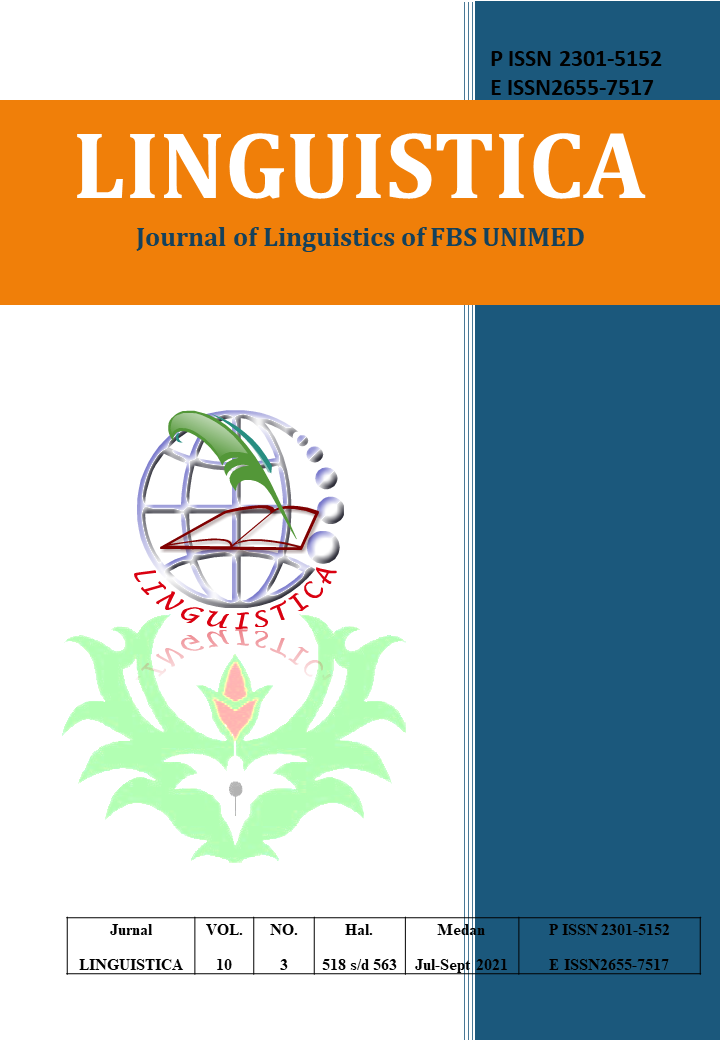CONVERSATIONAL ANALYSIS OF SELLING-BUYING IN DOLOK SANGGUL TRADITIONAL MARKET
DOI:
https://doi.org/10.24114/jalu.v10i3.28454Abstract
The thesis deals with conversational analysis of selling-buying in DolokSanggul traditional market. The objectives of this study were to find out types and most dominant type of turn-taking used in Batak Toba Seller and buyers in DolokSanggul Traditional market. The study was conducted by using desccriptive qualitative method. The data of the study were conversation and interaction between sellers and buyers during the selling-buying process. The data of this study contained 25 conversations. The data analysis were taken by listing and tabulating the data. The data were analyzed based on the theory that proposed by Sack et al (1974) . The findings inducted that there were three types of turn-taking found in Doloksanggul Traditional market . The finding were showed that CS2TNS (48%) SS (20%) and SCS (32%) and the most frequent turn-taking occurred in the conversation among seller and buyer is Current Speaker Select the Next Speaker (C2TNS). The conversation described how participant organize their interaction by distributing turns to the speakers. The transition from turn to next with no gap and no overlap are common occurred.Downloads
Published
2021-10-08
Issue
Section
Articles
License
Copyright (c) 2021 RAYA FITRI MANALU, FAUZIAH KHAIRANI LUBIS, ANNA RIANA SURYANTI TAMBUNAN

This work is licensed under a Creative Commons Attribution-ShareAlike 4.0 International License.
Authors who publish with this journal agree to the following terms:
- Authors retain copyright and grant the journal the right of first publication with the work simultaneously licensed under a Creative Commons Attribution License that allows others to share the work with an acknowledgment of the work's authorship and initial publication in this journal.
- Authors are able to enter into separate, additional contractual arrangements for the non-exclusive distribution of the journal's published version of the work (e.g., post it to an institutional repository or publish it in a book), with an acknowledgment of its initial publication in this journal.
- Authors are permitted and encouraged to post their work online (e.g., in institutional repositories or on their website) prior to and during the submission process, as it can lead to productive exchanges, as well as earlier and greater citation of published work (See The Effect of Open Access).
- This work is licensed under a Creative Commons Attribution-ShareAlike 4.0 International License.

